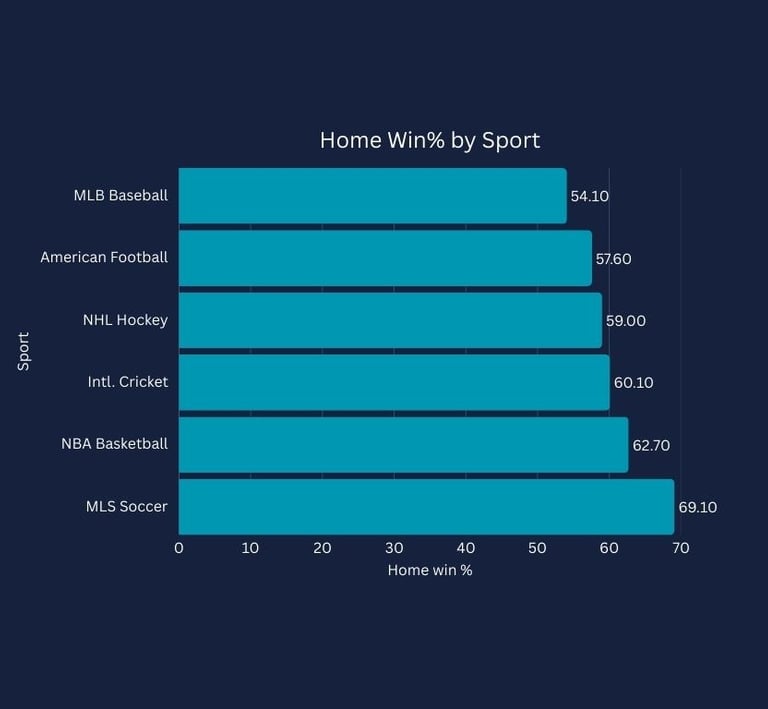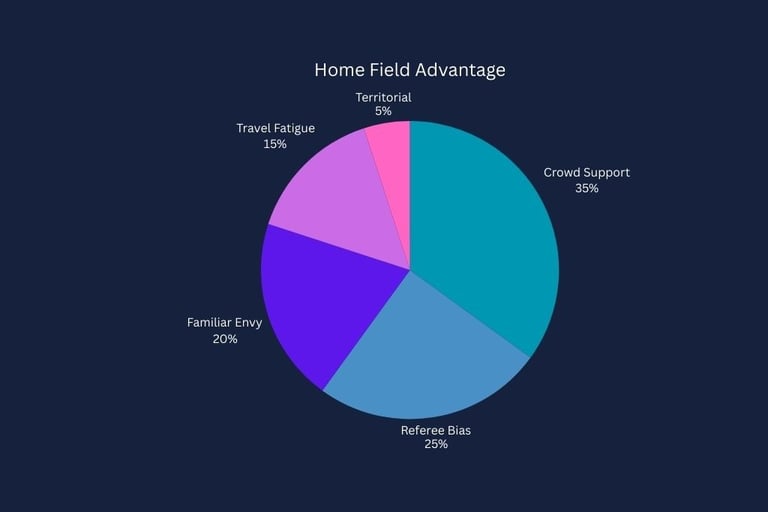From Cheers to Chokes
The Psychology of Crowd Influence in Sports
Yusuf
Introduction: The Power of the Crowd
Have you ever wondered why your team seems unstoppable at home but struggles on the road? Why that deafening roar from the stands can literally change the course of a game? The impact of spectators on home and away teams isn’t just folklore, it’s one of the most fascinating and well-documented phenomena in all of sports. From the thunderous 142.2-decibel roar at Kansas City’s Arrowhead Stadium to the eerie silence of COVID-era arenas, crowds influence everything from player performance to referee decisions.


The Psychology of Home Advantage: When Fans Become the Ultimate Performance Enhancer
Across all major sports, home teams consistently win more games than they lose.
MLS (Soccer): 69.1%-win rate at home
NBA (Basketball): 62.7% of victories at home
International Cricket: 60.1% home win rate
MLB (Baseball): 54.1% of games won at home
So, what causes this?
Territorial Confidence Athletes perform better in familiar environments- their own beds, daily routines, and venues they know inside out. Psychologists call this territorial confidence.
Social Facilitation Crowds amplify performance on well-learned skills. For elite athletes, a roaring home stadium becomes rocket fuel. This creates a reciprocal reinforcement loop – players perform better, fans cheer louder, and the cycle intensifies.
The Dark Side: When Home Pressure Backfires
While crowds often boost performance, they can also cause athletes to choke under pressure.
In elite soccer, high-status players convert just 65% of penalties at home, while lesser-known players score 88.9%.
Basketball players rush free throws under home pressure, reducing accuracy in clutch moments. Crowd pressure shifts athletes from a “seeking success” mindset to an “avoiding failure” mindset, a recipe for performance anxiety.
The Hostile Away Environment: Why Road Games Feel Like War
Away games are more than just travel, they’re psychological warfare.
Travel Fatigue & Circadian Disruption
NBA teams traveling over 1,500 km see a significant drop in winning percentage. Every extra 500 km traveled reduces win probability by ~4%. • Players suffer from jet lag and disrupted sleep cycles, known as circadian desynchronization.
Hostile Crowd Influence Away players face social inhibition, the opposite of social facilitation. Negative crowd noise disrupts focus, with some stadiums reaching 100+ decibels, loud enough to cause hearing damage. During COVID-19, when fans were absent, home advantage dropped by nearly 50%, proving that crowds play a direct role.
Referees Under Pressure: Crowd Bias in Officiating
Referees are not immune to crowd influence.
Research shows refs are 15.5% less likely to call fouls against home teams when crowds are loud.
Experiments with silent vs. noisy match footage confirm that crowd noise biases decisions.
COVID-era empty arenas revealed this bias disappears without fans. This means referees, consciously or unconsciously, become unwitting participants in the home advantage.


The COVID-19 Experiment: Silence That Changed Everything
The pandemic created the perfect natural experiment.
Home advantage dropped 7% in European football
Women’s football saw dramatic reductions in home bias
NHL & NBA: Significant home advantage declines
Referee bias almost disappeared
Players described the silence as surreal. Tennis legend Novak Djokovic admitted he thrives on crowd energy, whether positive or negative. This data proves beyond doubt that fans aren’t passive observers ,they are active participants shaping results.
Conclusion
Every chant, cheer, and gasp isn’t just noise, it’s an invisible force shaping sports history. The next time you’re in the stands, remember: your voice doesn’t just cheer, it changes the game.
Sources
Sporting Bounce – The Science of Home Advantage in Sports (2023)
IJIRT Journal – Impact of Audience Behavior on Athletic Performance (2024)
Inner Drive – The Impact of Crowd Noise on Referee Decisions (2024)
Everything Everywhere – Home Field Advantage Analysis (2024)
Stonewall Performance – Audience Effect on Athletic Performance (2024)
PMC – Pressing Crowd Noise Impairs Referees with High Anxiety (2019)
Connect
Stay updated with our latest insights.
Contact
theplaybooksportinfo@gmail.com
9999038304
© 2025. All rights reserved.
